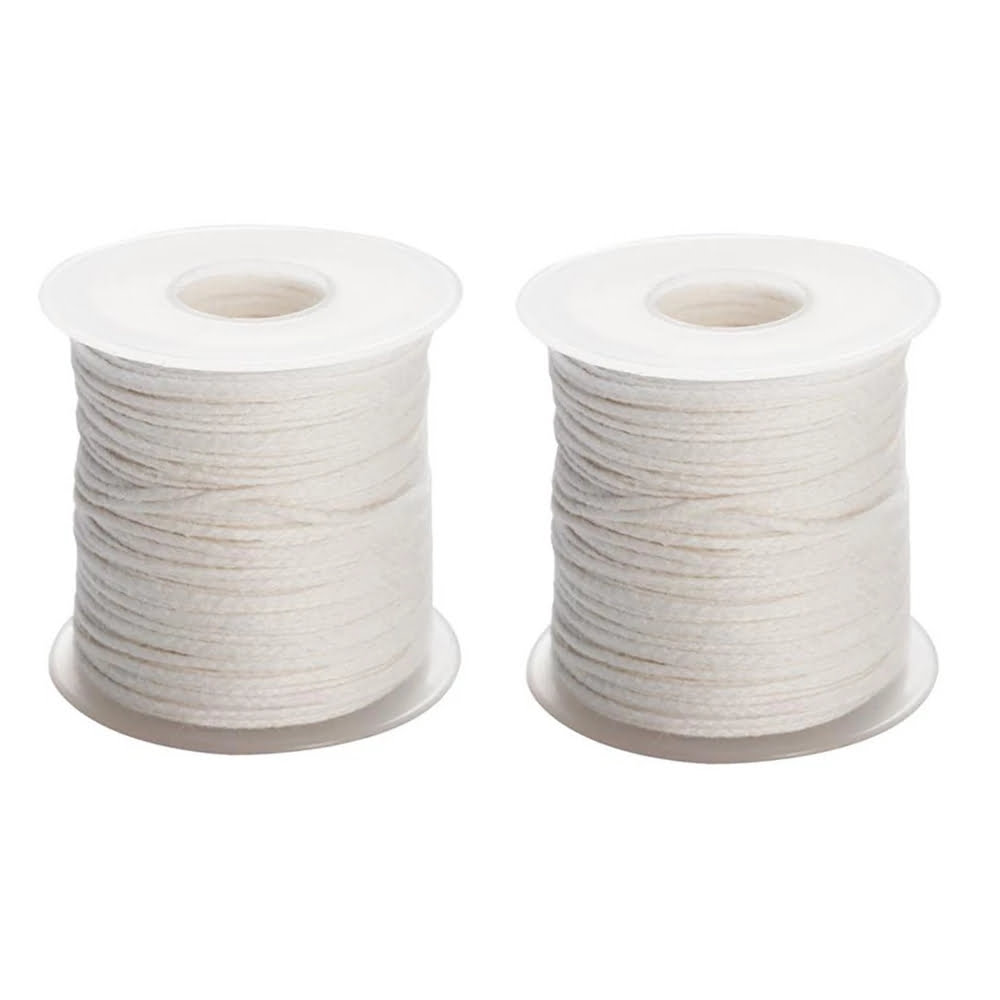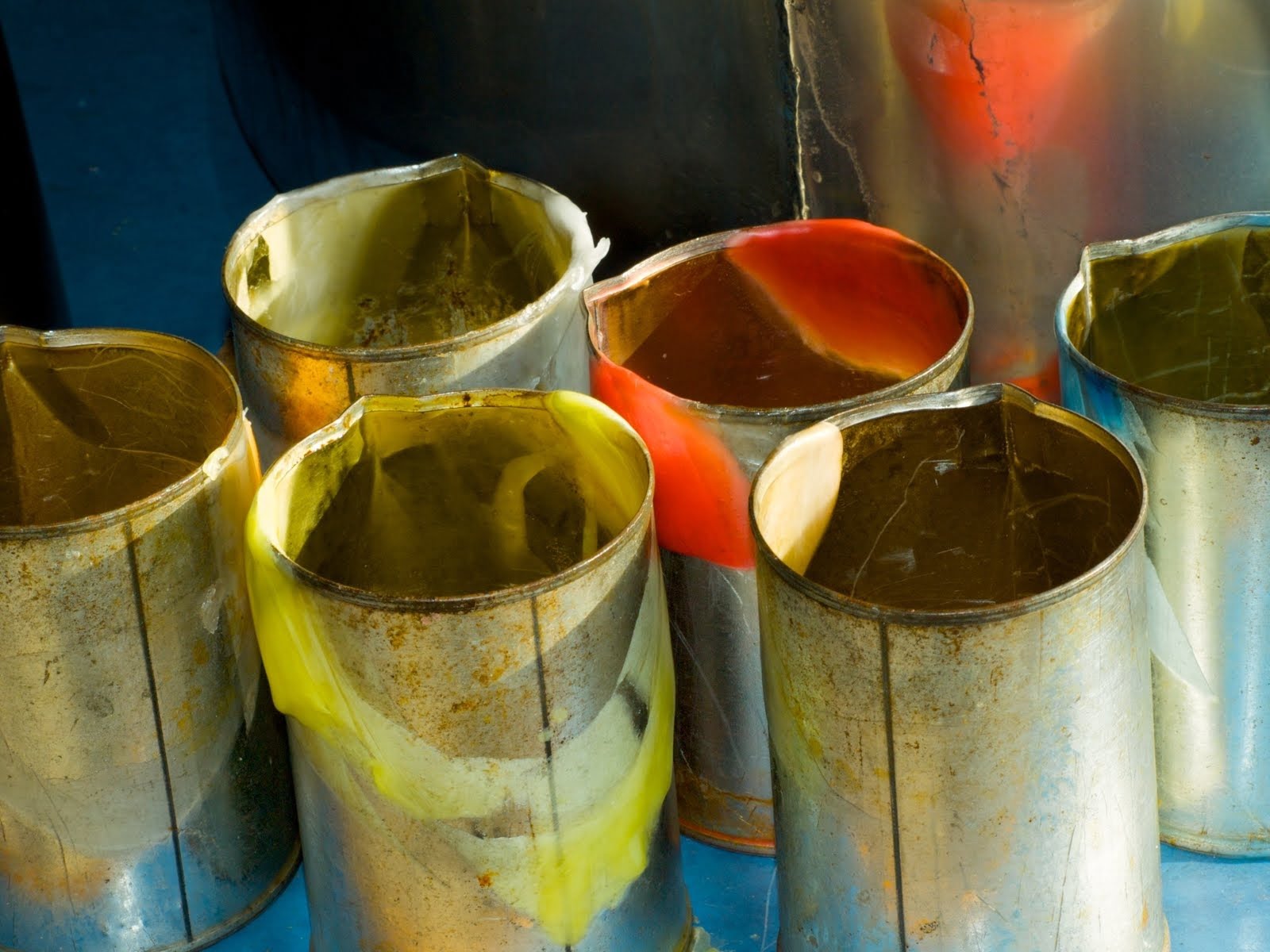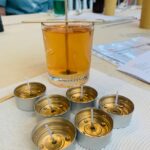When it comes to the world of crafting and DIY projects, candle making has always been a beloved and popular craft. There’s something incredibly satisfying about creating unique and beautiful candles from scratch. And one essential aspect of candle making that greatly influences the final product is the use of molds.
Molds play a crucial role in shaping and defining the candles we create. They give us the ability to experiment with various shapes, sizes, and designs, allowing our creativity to run wild. However, knowing exactly when to remove these molds is equally as important as choosing the right mold itself.
In this article, we will delve into the world of candle making with molds, exploring different types of molds available in the market and understanding their advantages and disadvantages. We will also provide a step-by-step guide on the candle-making process using molds, highlighting important factors such as selecting the right wax and wick. But most importantly, we will focus on why timing is everything when it comes to removing molds from our candles.
By learning about temperature control, checking for candle maturity, and understanding potential risks of premature mold removal, you’ll enhance your skills as a candle maker and ensure flawless results every time. So let’s dive in and master the art of mold removal for our candle creations.
Types of Candle Molds
The process of candle making with molds involves selecting the right type of mold to achieve the desired end result. There are various types of candle molds available in the market, each with its own advantages and disadvantages. When choosing a mold type, it is important to consider factors such as the design intricacy and the type of candle being made.
One popular type of candle mold is the silicone mold. Silicone molds are flexible and easy to use, making them a great option for beginners. They come in various shapes and sizes, allowing for endless creative possibilities. However, one drawback of silicone molds is that they can be more prone to trapping air bubbles in the candle, resulting in an uneven surface.
Another common mold type is aluminum or metal molds. These molds are durable and can withstand high temperatures, making them suitable for pouring hot wax. Metal molds also provide a smooth finish on the candle surface and are often used for pillar candles. However, one key disadvantage of metal molds is that they can be difficult to remove without warping or damaging the finished candle.
Plastic molds are another option available for candle makers. Plastic molds are affordable and lightweight, making them easy to handle. They come in a wide variety of shapes and sizes, including novelty designs like animals or flowers. One disadvantage of plastic molds is that they may not produce as smooth of a finish as silicone or metal molds.
When choosing a mold type, it is important to consider the desired outcome and level of experience as a candle maker. Different mold types can yield different results in terms of shape, surface finish, and ease of use. By understanding the advantages and disadvantages of each mold type, you can make an informed decision that will lead to successful and beautiful homemade candles.
| Mold Type | Advantages | Disadvantages |
|---|---|---|
| Silicone Mold | Flexible and easy to use, comes in various shapes and sizes | Potential for air bubbles in the candle, uneven surface |
| Aluminum/Metal Mold | Durable, can withstand high temperatures, provides a smooth finish | Difficult to remove without warping or damaging the candle |
| Plastic Mold | Affordable, lightweight, available in a variety of shapes and sizes | May not produce as smooth of a finish as other mold types |
The Candle Making Process
Making candles with molds is an art that requires careful attention to detail and a step-by-step process. In this section, we will guide you through the candle making process, from selecting the right wax and wick to understanding the importance of temperature control.
Selecting the Right Wax and Wick
Before starting the candle making process, it is important to choose the right wax for molding. There are various types of wax available, including paraffin wax, soy wax, and beeswax. Each type has its own advantages and disadvantages, so consider factors such as burn time, melting point, and scent throw when selecting your wax.
In addition to choosing the right wax, selecting the appropriate wick is crucial for successful mold candlemaking. The size and type of wick will depend on the diameter of your mold.
A wick that is too small may result in a weak flame or poor burn performance, while a wick that is too large can cause soot and uneven burning. It is recommended to refer to wick charts or consult with experienced candle makers to ensure you are using the correct wick size.
Understanding Temperature Control
Temperature control plays a significant role in candle making with molds as it affects various aspects of the final product’s appearance and quality. It is essential to heat your wax to its optimal pouring temperature before filling your molds. This temperature will vary depending on the type of wax you are using.
Here’s a step-by-step guide for achieving optimal temperature control:
- Melt your wax using a double boiler or a dedicated melting pot.
- Monitor the temperature using a thermometer.
- Once your wax reaches its melting point, lower the heat and maintain it at a specific pouring temperature.
- Avoid overheating the wax, as this can lead to shrinkage or surface imperfections.
By maintaining the proper pouring temperature, you can achieve a smooth and even finish on your molded candles. It is important to note that different molds may require specific pouring temperatures, so be sure to follow any instructions provided by the mold manufacturer.
In the next section, we will explore the factors that affect mold removal time and discuss when to safely remove your candles from their molds.
Factors Affecting Mold Removal Time
Temperature and Humidity
One of the key factors that can significantly affect mold removal time is temperature and humidity. Higher temperatures and lower humidity levels tend to speed up the curing process, while cooler temperatures and higher humidity levels can slow it down. It is crucial to monitor the environment in which your candles are curing to ensure optimal conditions for mold removal. A temperature-controlled room with moderate humidity is ideal for a consistent and predictable curing process.
Wax Type and Formula
Different types of waxes have varying curing times before they are ready to be removed from the molds. Some waxes require longer periods of curing to fully set and harden, while others may cure relatively quickly. Additionally, the formula or blend of additives in the wax can influence its curing time. It is important to follow the manufacturer’s instructions for the specific wax being used to determine the appropriate mold removal time.
Complex Molds
The intricacy of the mold design can also impact mold removal time. Complex molds with intricate details may require more time for the candle to fully solidify before it can be safely removed from the mold without losing its shape or damaging any fine features. It is essential to factor in the complexity of your chosen mold design when determining when to remove it.
Properly understanding and considering these factors will help you determine the right timing for removing molds in candle making. By ensuring optimal temperature and humidity, using suitable wax types, and taking into account complex molds, you can enhance your candle-making experience and achieve desirable results every time.
Checking for Candle Maturity
Understanding the concept of candle maturity
Before removing the molds from your candles, it is important to understand the concept of candle maturity. Candle maturity refers to the point at which a candle has fully solidified and cured, allowing it to be removed from the mold without any negative consequences. It is crucial to allow enough time for the candle to reach this stage in order to ensure a high-quality final product.
During the curing process, candles continue to release moisture and cool down, which helps them maintain their shape and stability. Removing a candle from its mold too early can result in misshapen or distorted candles that may not burn properly. Additionally, premature removal can lead to surface imperfections or cracking as well as difficulties with fragrance retention.
How to determine if a candle is ready for mold removal
To determine if a candle is ready for mold removal, there are several signs you can look out for:
- Temperature: The candle should have cooled completely before attempting to remove the mold. Touching the outside of the mold will give you an idea of its temperature – it should feel cool or slightly warm.
- Firmness: Gently press on different areas of the candle using your finger. If it feels firm and doesn’t leave a mark or dent, then it is likely ready for mold removal.
- Shrinkage: Pay attention to any visible shrinkage around the edges of the mold. If there are no significant shrinkage lines or gaps observed, it may be an indication that the wax has fully contracted and set.
- Texture: Examine the surface texture of the candle. It should be smooth and uniform without any visible stickiness or tackiness.
- Time: Follow recommended curing times provided by your specific wax manufacturer as a general guideline for when your candles might be ready for mold removal.
Common signs to look out for before removing the mold
In addition to the specific indicators mentioned above, there are a few common signs that can help you determine if your candle is mature enough to be removed from its mold:
- Shrinking away from the mold walls: If you notice a slight gap between the wax and the inside walls of the mold, it suggests that the candle has fully contracted and detached itself from the mold surface.
- Easy detachment: Gently try to remove a small corner or edge of the candle from the mold. If it easily releases without any resistance or damage, it may be an indication that the entire candle is ready for removal.
- Visual inspection: Examine the overall appearance of the candle. It should have a smooth, glossy finish and maintain its intended shape.
By carefully observing these signs, you can ensure that your candles have reached their desired maturity level and are ready to be removed from their molds. Taking this step at the appropriate time will contribute to achieving beautiful and professional-looking candles.
Potential Risks of Premature Mold Removal
Removing candle molds too early can have negative consequences on the appearance and stability of the finished product. It is important to exercise patience and wait for the appropriate time before removing the molds.
One potential risk of premature mold removal is distortion or deformation of the candle shape. When the wax is still soft and malleable, removing the mold can cause the candle to lose its intended form. The pressure applied during mold removal can result in misshapen candles with uneven edges or bulges. This not only affects the aesthetic appeal of the candle but also makes it difficult to properly fit a wick if necessary.
Another risk is surface imperfections such as cracks and air bubbles. Removing a mold too early can disturb the settling process of wax, leading to visible flaws on the surface of the candle. Cracks may appear due to shrinkage as the wax cools, while air bubbles may become trapped when removing the mold prematurely. These imperfections not only compromise the visual appeal but also weaken the structural integrity of the candle.
If a mold is removed before a candle has fully solidified, it may also be prone to misalignment or warping. As wax continues to cool and harden after removal from a mold, minor shifts can occur which result in an off-centered wick or tilted position. This not only affects the overall appearance but also affects how evenly and effectively the candle burns.
To salvage a prematurely removed mold candle, there are a few steps that can be taken. First, evaluate the extent of damage and determine if any corrections need to be made. Minor imperfections can potentially be fixed by gently reheating specific areas with a hair dryer or heat gun and reshaping them back into place before they fully harden again. Additionally, surface cracks or imperfectio.
The Ideal Time to Remove Molds for Different Candle Types
When it comes to candle making with molds, knowing when to remove the molds is crucial in achieving the desired outcome. The timing of mold removal can greatly affect the appearance and stability of the final candle. In this section, we will discuss the ideal time to remove molds for different types of candles.
For pillar candles, it is generally recommended to wait until the wax has fully cooled and hardened before removing the mold. This usually takes around 24 to 48 hours, depending on factors such as wax type and temperature. Removing the mold too early can result in a misshapen or unstable candle, so patience is key when it comes to pillar candles.
Container candles, on the other hand, require a slightly different approach. Since they are poured directly into a container, they rely on the container’s shape for support. It is important to wait until the wax has completely solidified before attempting to remove the mold. This typically takes about 4 to 6 hours but may vary depending on factors like wax type and temperature.
Specialty candles with unique shapes can present additional challenges when it comes to mold removal. These often require longer curing times due to their intricate designs and complex molds. It is advisable to consult specific guidelines provided by manufacturers or experienced candle makers who have tried similar molds.
Tips and Tricks for a Successful Mold Removal
Candle making with molds can be a fun and rewarding craft, but knowing when to remove the molds is crucial for achieving successful and beautiful candles. In this section, we will explore some tips and tricks to ensure a smooth mold removal process and to avoid any damage to the finished candle.
Proper technique is key when it comes to removing molds without damaging the candle. It is important to be patient and gentle during this step. One common technique is to gently tap the sides of the mold to loosen the candle before attempting removal. Additionally, using a soft, non-abrasive cloth or glove can help provide a good grip on the mold while minimizing any potential for scratches or other imperfections on the surface of the candle.
Using mold release agents can significantly ease the mold removal process. These products create a barrier between the wax and mold, allowing for easy separation. There are various types of mold release agents available, including sprays, powders, and liquids. It is essential to follow the instructions provided by the manufacturer when applying these agents to ensure optimal results.
Once the candle has been successfully removed from its mold, there are additional steps you can take to achieve a flawless finish. Trimming any excess wax around the wick or uneven edges can enhance its overall appearance. Using a heat gun or hairdryer on low heat can also help smooth out any imperfections on the surface of the candle. Finally, consider adding any desired finishing touches such as decorations or attaching labels or charms.
By following these tips and tricks for successful mold removal, you can elevate your candle-making skills and create beautiful candles that are sure to impress. Remember that practice makes perfect, so don’t be afraid to experiment with different techniques and find what works best for you.
Conclusion
In conclusion, mastering the art of mold removal is essential for candle makers who want to create beautiful and flawless candles. Throughout this article, we have explored the different types of molds available in the market, discussed the candle-making process step-by-step, and examined the factors that affect mold removal time. We have also looked at checking for candle maturity, the potential risks of premature mold removal, and provided tips and tricks for a successful mold removal.
One of the key takeaways from this article is the importance of patience and attention to detail when deciding to remove molds. Candle making is a craft that requires precision and a deep understanding of the materials being used. Rushing through the process or removing molds too early can have negative effects on the final appearance and stability of the candle. It is crucial to wait until a candle has reached its full maturity before removing the mold.
Finally, I encourage all candle makers to experiment and find their perfect mold removal time. Each type of candle may require different considerations due to its size, shape, or wax formula. By taking into account factors such as temperature, humidity, and complexity of molds, you can develop a sense of when it is best to remove your molds. With practice and experience, you will become more adept at achieving flawless results in your candle making.
Remember, becoming an expert in mold removal is not an overnight process. It takes time and experimentation to find what works best for you and your unique creations. Embrace this journey as part of your growth as a candle maker and enjoy every step along the way. Happy candle making.
Frequently Asked Questions
How long before you can remove mold from candles?
The time it takes to remove mold from candles largely depends on the extent of the mold growth and the type of candle. For minor surface mold, you can usually use a soft brush or cloth to gently scrub away the mold. This process may take anywhere from a few minutes to half an hour per candle, depending on their size and intricacy.
However, if the mold has penetrated deeply into the candle or if there is substantial mold growth, more extensive cleaning methods may be needed. In such cases, it might require soaking the candles in a solution or seeking professional assistance.
How long to leave wax in silicone mould?
The duration for leaving wax in a silicone mold varies depending on multiple factors such as the size and shape of the mold, temperature conditions, and type of wax used. Generally, after pouring hot melted wax into a silicone mold, it is recommended to let it cool completely before attempting to remove it.
This cooling process often takes around one to two hours for smaller molds but could potentially take several hours or even overnight for larger or more intricate molds. It is crucial not to rush this step as premature removal of wax from a silicone mold can lead to deformation or damage.
What is the easiest way to remove mold from candles?
When it comes to removing molds from candles, there are several effective methods one can employ depending on personal preferences and available resources. One of the easiest ways is by using a mixture of warm water and mild dish soap.
Gently scrubbing the affected areas with this solution using a soft brush or cloth can help remove surface-level molds effectively. Another option includes using vinegar diluted with water applied directly onto the affected areas followed by thorough rinsing and drying.

Welcome to my candle making blog! In this blog, I will be sharing my tips and tricks for making candles. I will also be sharing some of my favorite recipes.





